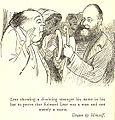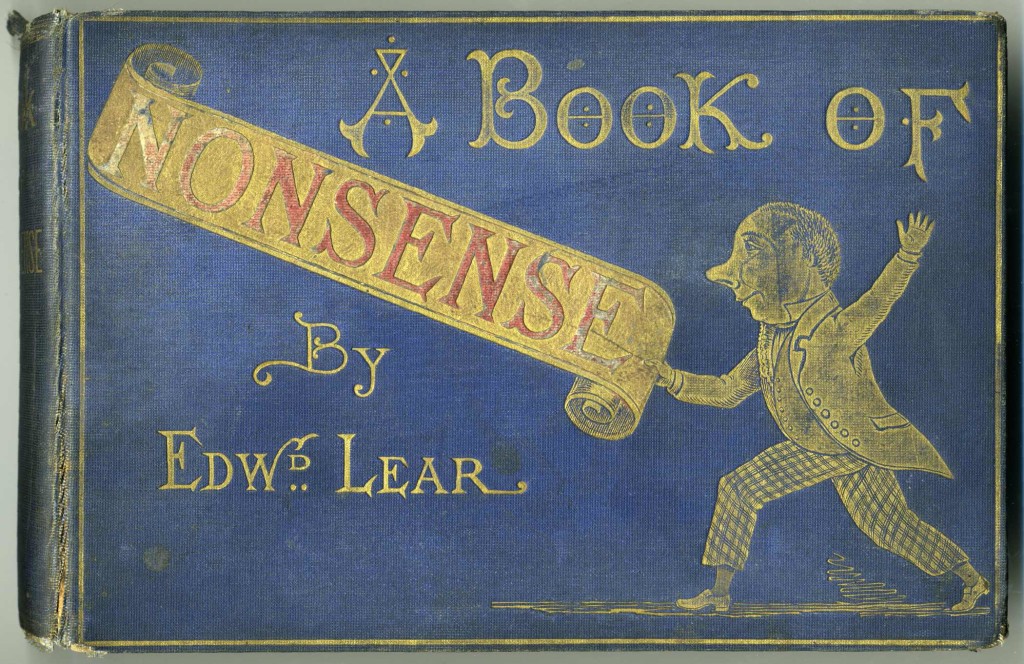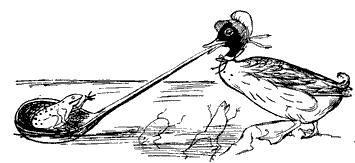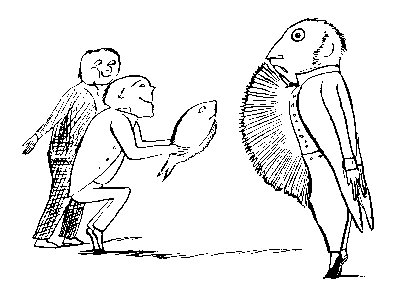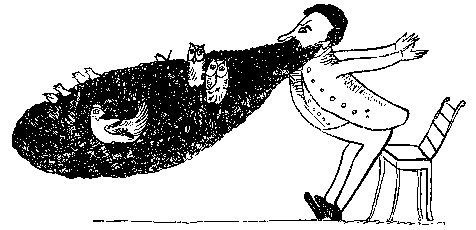享年93歲的詹姆斯•布坎南(James Buchanan)是一位傑出而富有爭議的經濟學家,他與戈登•圖洛克(Gordon Tullock)合作創立了被稱為“維吉尼亞學派”的公共選擇理論。
在布坎南和圖洛克看來,在分析市場決策時採用“經濟人”假設(認為人的一切行為都是為了最大程度地滿足私利),而在研究政治決策時假設政治行為人是無私的,這相互矛盾。羅納德•裡根(Ronald Reagan)那句名言——“英文中最令人膽戰心驚的幾個字莫過於,'我為政府工作,我來這兒是為了幫助你”——其靈感源泉就是他們的觀點。
布坎南是1986年諾貝爾經濟學獎得主。考察那些涉及保護主義或農場補貼的政治博弈,可以印證他的觀點。那麼,圍繞布坎南的爭議從何而來?絕大多數爭議源於,布坎南的精緻理論,被人們與其他偏芝加哥學派經濟學家的一些不夠嚴謹的觀點混淆在一起。那些經濟學家不顧事實地認為,每個人在任何時候都是自私的。
以布坎南自己為例,他在母校田納西州立大學(Middle Tennessee State University)設立了多項獎學金(他後來又取得了芝加哥大學博士學位)。懷疑別人自稱的無私並無不妥,但自稱無私者並不總是在故作姿態。
,1962年出版,該書是諾貝爾委員會對布坎南的頒獎詞中提到的第一本著作)一書中,他指出,在政治領域和市場中,自由的、不經協調的行動,都應在各方一致同意的憲法契約下進行。但他們始終未能解釋的是,自利的人類個體如何能達成一致意見。
布坎南對精英主義極為反感。布坎南於1919年出生於田納西州一個在當地頗有聲望、但比較貧困的家庭。談到自己的出身以及阿巴拉契亞山脈背景時,他曾說:“我所知道的所有祖輩……(都是)堅強的愛爾蘭裔美國人,他們是虔誠的長老教徒,非常獨立……我是南方人,我們是南北戰爭中的戰敗方,我的祖父母還記得那場戰爭的情形。”
布坎南並未因此成為南部邦聯政府的辯護者。阿巴拉契亞地區的農民在南北戰爭前並非奴隸主。不過,南北戰爭讓布坎南堅決地站在了特權的對立面(他從未在任何精英大學中任過教),對於特權階層人士所稱的他們是服務於公共利益的說辭,他也深感懷疑。他和圖洛克在公共選擇研究中心(Public Choice Center)舉辦的研討班以風格犀利而聞名。一名經歷過這種犀利風格“洗禮”的研修班學員回憶道:“布坎南講話毫不留情面,戈登也言辭尖銳。”
他不僅毫不留情地抨擊凱恩斯主義的謬誤,對芝加哥學派的錯誤觀點也毫不手軟。芝加哥學派過於輕率和樂觀,他們認為:自由市場是所有可能選擇中最理想的,因為通過交易所能獲得的所有收益都已被創造出來。布坎南對此表示強烈懷疑:“潛在的參與者直至進入市場才知道自己將會作何選擇。由此可以推出,從邏輯上來說根本不可能存在一位無所不知的設計師——當然,除非我們打算剝奪個體的自由意志。”布坎南的思想遠比人們通常以為的更精妙。
In Appreciation: James M. Buchanan
The Nobel-winning economist who understood how politics really works.
James M. Buchanan, who died Wednesday at age 93, was one of history's greatest economists. Though he won the Nobel Prize in 1986, Jim at heart was always a farm boy from Tennessee—an old-fashioned, hardworking American who disdained unearned privileges as well as deeply distrusting the promises of politicians and the passions of collectives.
The theme of his life's work is best summarized in the title of his 1997 article "Politics Without Romance." With longtime colleague Gordon Tullock, Jim launched a research program—public-choice economics—that challenged the widespread notion that politicians in democratic societies are more nobly motivated and trustworthy than are business people and other private-sector actors. In a wide river of books and papers, Jim warned against the foolishness of romanticizing government.
Jim regarded his work as simply extending and applying the insights of America's founding generation, especially those of James Madison. Unlike too many pundits and professors over the past century—but like America's founders—Jim understood that politicians' lovely proclamations of their desires to improve society too often camouflage unlovely venal motives that prompt politicians to disregard the general welfare in order to transfer wealth and privilege to powerful interest groups.
Auto-company bailouts, Solyndra subsidies, farm programs, tariffs—the real and ugly reasons for these and many other government activities become clear after absorbing Jim Buchanan's lessons.
His deep skepticism of government, combined with his expert understanding of free markets, led Jim to describe himself as a "classical liberal." But it wasn't always so. Like many of his generation, the young Jim Buchanan was a socialist. His socialism was cured, though, by his studies in economics at the University of Chicago. While there, Jim polished his keen instincts for detecting nonsense.
Jim's nonsense-detection instincts are on full display in his 1958 book "Public Principles of Public Debt." By the 1950s most economists were trumpeting the Keynesian myth that government debt is no burden on future taxpayers as long as it is held internally—that is, as long as "we owe it to ourselves."
Wrong, said Jim. It is unfortunate that he is no longer here to speak out against the again-rampant Keynesians who advocate massive deficit financing. Misled by their own unjustified lumping together of taxpayers and domestic bondholders, Keynesians mistakenly conclude that government is exempt from the reality that counsels households and firms to follow prudent rules of finance. This Keynesian error is one that Jim never tired of challenging.
Not that Jim held much hope that his speaking out against unwise government policy would do much good. He sought to prevent harmful policies by tying politicians' hands rather than by pleading with politicians to be more public-spirited. And to tie politicians' hands Jim championed constitutional reform. He believed that only binding, enforceable constitutional rules can prevent Leviathan from eventually suffocating private markets and stamping out human freedom.
Ironically, the constitutional reform that Jim advocated practically requires the cooperation of the politicians whom he so distrusted. Yet it is a mark of greatness in Jim Buchanan that he held out hope, until his dying day, that clear-eyed scholarship would eventually persuade people of the dangers of unconstrained government and of the need to somehow rein it in.
Mr. Boudreaux is professor of economics at George Mason University and chair for the study of free market capitalism at the Mercatus Center.
---
The Politics of Bureaucracy 官僚政治學
The Politics of Bureaucracy. By Gordon Tullock. (Washington: Public Affairs Press, 1965. Pp. 228. )
Gordon Tullock《官僚政治學》,北京:商務 ,2010
連索引都做不成的書
更成熟的 Gordon Tullock在69歲寫的另外一本(北京商務印書館 同系列)
戈登·圖洛克(Gordon Tullock)1922年出生於美國伊利諾斯州,是國際上最為重要的公共選擇經濟學家,著述豐富。他致力於將
經濟學的理性分析方法引入政治
決策過程的研究,研究領域覆蓋國家起源理論、官僚主義、獨裁、民主和法庭內部的決策行為等等。他最近一個
職位是在
喬治·梅森大學(
George Mason University)的法和經濟學研究中心擔任教授。
1922年出生於美國伊利諾斯州,1947年獲得
芝加哥大學法學博士學位,1992年獲芝加哥大學法學榮譽博士學位。1949—1956年任職於美國外交部,曾先後在中國天津、香港和南韓等國家和地區從事過外交服務工作,其間開始轉向對經濟學的研究。1957年在費城第一次與
布坎南相遇,他關於
官僚政治的經濟學分析引起了布坎南的重視。
1958年被邀請作為博士後人員加盟由布坎南和沃倫·納特在
弗吉尼亞大學創辦的傑菲遜政治經濟學研究中心(1969年更名為公共選擇研究中心)
1962年,他和布坎南合著的《同意的計算》(中國社會科學出版社,1999年)為
公共選擇學派奠定了理論基礎,並標志著公共選擇作為一門獨立的學科得以產生。從此,塔洛克的名字也與布坎南和公共選擇聯繫在一起。
1963年他和布坎南創立了“公共選擇學會”,1965年出版了他的個人專著《官僚政治學》,開啟了公共選擇理論中的官僚經濟學 1967年發表了《關稅、壟斷和偷竊的福利成本》(《經濟社會體制比較》2000年第1期)一文,奠定了他作為
尋租理論創始人的地位。
1969年他創立了《公共選擇》雜誌,並擔任該雜誌主編長達二十五年之久,使這本雜誌成為目前全世界30種最重要的期刊之一。
塔洛克曾經擔任過公共選擇學會第二任會長,東部經濟學會會長,南部經濟學會會長。1998年獲得
美國經濟協會“傑出會員獎”(該獎只授予那些對經濟理論和經濟思想作出過傑出貢獻的美國經濟學家)。
到 1991年為止他的論文和論著被三十幾個學科引證達3991次。被當今活著的最著名的經濟學術史專家馬克·布勞格(
張維迎,1997年)列入《世界重要經濟學辭典》(經濟科學出版社,1987年)、《凱恩斯以後最有影響的100位經濟學家》(
西南財經大學,1989年)。
塔洛克還是《新帕爾格需夫經濟學大辭典》中“公共選擇”、“
尋租”和“經濟學在生物學中的運用”等辭條的撰寫人,這在相當程度上也反映了他在這些領域的貢獻。因為,該辭典的主編在“出版說明”中指出:“經過深入討論和
協商, 編輯們篩選和確定了條目,並約請數百名學者撰稿,他們的學術專長堪稱當今經濟學各個分支和各種觀點的代表”(《新帕爾格雷夫經濟學大辭典》第一卷,經濟科 學出版社,1992年,第1頁)。除前面列舉的代表著和論文以外,塔洛克還著有《關於政治數學》(1967年)、《私人欲望、公共途徑理想政府範圍的經濟 學分析》(1970年)、《收入再分配經濟學》(1983年)、《新聯邦擁護者》(1994年)、《非人類社會經濟學》(1994)、《尋租》(1994 年,西南財經大學出版社,1999年)、《論投票》(1998年)等23部著作和幾百篇論文,它們主要涉及
福利經濟學、公共選擇、法和經濟學、
生物經濟學等領域。
NATIONAL REVIEW
September 25, 2006
THE NON-NOBELIST
But Gordon Tullock, maverick economist, deserves one
JOHN J. MILLER
Shortly after George Mason University opened its new law-school building a few years ago, then-governor of Virginia Jim Gilmore toured it. He asked to meet Gordon Tullock, a renowned economist on the faculty. Off a curving fourth-floor hallway, in Tullock’s freshly furnished office, the two men shook hands. “You’re the governor?” asked Tullock. “Good. Then maybe you can fix the leak in my ceiling.”
And that, in a nutshell, may explain why Tullock has failed to win a Nobel Prize in economics — an award he richly deserves, but one that has eluded him for decades. He is famously impolitic, and has developed a knack for provocation — a skill that can be either irritating or endearing. Whatever its effect, however, Tullock’s fondness for controversy is backed up by a daring intellect that cuts across disciplines and has shaped free-market thinking for more than a generation. “Gordon is one of the most original-minded persons in the world,” says Milton Friedman, who took home the Nobel in 1976. “I always thought it was a mistake not to let him have a prize.”
As the Nobel Foundation prepares to name this year’s recipient in October, it would do well to reconsider the case for Tullock. He has led an important and influential life, despite being constantly overlooked.
Tullock, now 84, was born and raised in Rockford, Ill. Although he attended the University of Chicago, he never formally received his bachelor’s degree because he objected to paying a $5 fee. “It doesn’t sound like a lot of money now, but it was to me back then,” he explains. This refusal didn’t stop him from entering Chicago’s law school, where he took his first and only course in economics. His teacher for that class was Henry B. Simons, a fierce critic of the New Deal and a founder of the fabled Chicago School — a group of professors and students, including Friedman, who would go on to win a dozen Nobels.
Tullock eventually earned his law degree and went into private practice. This lasted four months. “I participated in two minor court cases — I won one that I should have lost, and I lost one that I should have won,” he says. He then entered the Foreign Service and spent several years in China, Hong Kong, and Korea, sparking a lifelong fascination with international relations. He’s currently writing a book on the history of U.S. foreign affairs. “Since about 1890, our policies almost always have been wrong,” he says with a smirk — as usual, he’s seeking a reaction. He describes why it was a mistake to have intervened in the First World War and how Pearl Harbor might have been avoided. Then he suggests that it might be worthwhile, right now, for the U.S. to invade Brazil: “We could move into the jungle and develop it.” A couple of years ago, in fact, he drafted a paper urging this course of action. “I had the good sense not to give it wide circulation.” If nothing else, Tullock loves to start an argument — even one that guarantees he won’t ever win the Nobel Peace Prize.
Working for the State Department allowed Tullock to observe the operations of government up close. He was not enamored with what he saw, but the experience did give an idea for a book. He quit the diplomatic corps to write
The Politics of Bureaucracy. As Tullock searched for a publisher, his photocopied manuscript found its way into the hands of Prof. James M. Buchanan, who was then teaching at the University of Virginia.
This was the start of a remarkably productive association. Buchanan invited Tullock to Charlottesville for a year-long fellowship. By the time it was over, in 1959, the two had agreed to collaborate on a book about the economics of constitutions and democracies. Curiously, Tullock doesn’t vote: “Anthony Downs [an economist] convinced me long ago that I stand a greater chance of being killed in a car accident on the way to the polls than I do of making a difference with my vote,” he says. “So why bother?” Tullock takes great pleasure in announcing this view — and on Election Day, friends enjoy attaching their “I Voted” stickers to his office door.
![]() Gordon Tullock
Gordon Tullock/Darren Gygi
In 1962, Buchanan and Tullock released
The Calculus of Consent, which explained how economic rules affect political decisions. The book is a founding text of public-choice theory, a powerful intellectual movement that analyzes why governments so often fail to achieve their goals. “It’s a classic,” says William A. Niskanen, chairman of the Cato Institute. Public-choice theorists view lawmakers and bureaucrats through the lens of classical economics: as rational deliberators acting on the basis of their own interests. By eschewing the naïve view of public officials as selfless benefactors of the public good, this approach has blazed new trails in explaining government dysfunctionality. Buchanan and Tullock shared a byline and described their partnership in a preface to
Consent: “In the most fundamental sense, the whole book is a genuinely joint product.”
Yet in 1986, when the Nobel people decided that public-choice theory had matured to the point of deserving the prize, they gave it to Buchanan alone. He had certainly earned it, and his distinguished career included many books and papers that he had written by himself. At the center of his achievement, however, lay his work with Tullock. When
National Journal asked Buchanan’s co-author about being skipped over, Tullock shot back: “I’m mad about it, to put it bluntly.”
The slight was both obvious and gratuitous: In the 36 years since the economics prize was first awarded in 1969, it has been shared 16 times. Some thought that Tullock was a victim of his background. Lacking any formal training in economics beyond that single law-school class, he was possibly seen as an interloper who didn’t truly qualify. Moreover, Tullock has been called a “natural economist,” meaning that he did not have to sit through hours of lectures to understand his discipline. Nor did he have to write a thick dissertation. His contributions to economics have come in the form of big ideas and deep insights, rather than the technical genius and mathematical rigor that increasingly dominate the field. Tullock himself thinks something else may have played a role: “I have no doubt that I was making a lot of nasty cracks about Sweden and its socialist economy in those days.” The Nobel Foundation, of course, is based in Stockholm.
By the time he had missed out on the big prize, Tullock was used to snubs. As a professor at the University of Virginia in the 1960s, he was turned down for promotion three times, prompting him to leave. “I could see they didn’t want me around,” he says. There’s a nomadic quality to his life, with its spells at the University of South Carolina, Rice, Virginia Tech, and the University of Arizona. His current appointment, at George Mason, is actually his second stop at the school.
Even if Sweden’s prize-pickers were to shed their presumed biases, it’s unlikely that they’d circle back to Tullock. They’ve already given an award for the ideas contained in
The Calculus of Consent. But the case for Tullock doesn’t need to rest on this book alone, as his greatest contribution to economics may lie somewhere else entirely.
Tullock is the author of one of the most groundbreaking economics papers ever published: “The Welfare Costs of Tariffs, Monopolies, and Theft.” It explained that when individuals or groups try to gain economic advantages through the manipulation of government policy — lobbying to build trade barriers or legal monopolies, for instance — the costs of their activities are both high and hidden. They not only discourage competition, but also drive talented people into non-productive activities, as skilled managers devote themselves to winning new favors from government or defending the ones they already have. Today, this behavior is called “rent-seeking,” and it is of course deeply embedded in Washington’s political culture of earmarks and subsidies. In his paper, Tullock mischievously likened the whole enterprise to theft. “I try to raise eyebrows in everything I write,” he says.
Top journals refused to publish the paper. “It does not appear significant (as a theoretical contribution),” wrote the editor of
The American Economic Review in a rejection letter. The
Journal of Political Economy and The
Southern Economic Journal turned him down as well. A less prestigious outlet, The
Western Economic Journal, finally published it in 1967. Yet almost nobody noticed. “It went down the memory hole,” says Tullock. Then, seven years later,
The American Economic Review printed an article by Anne Krueger on rent-seeking — she actually invented the term, and arrived at the concept with no knowledge of Tullock’s prior scholarship. All of a sudden, Tullock’s pioneering work began to receive attention. Rescued from obscurity, it has since been credited with helping overturn the once-consensus view that the social costs of government regulations are minimal.
Tullock never married and he has no kids, so what he will leave behind is his work. There’s an awful lot of it, and it covers a vast range of subjects: income redistribution, political revolutions, and even biology (he once wrote a paper on a bird called the coal tit). The Liberty Fund recently put out
The Selected Works of Gordon Tullock, a ten-volume set that spans more than 4,000 pages. “I can’t complain about my career being blighted,” he says. “I’ve done very well.” He’s also done a great deal of good, for which the world should be grateful, regardless of what they say in Stockholm.

 〕, 〜s)
〕, 〜s)























